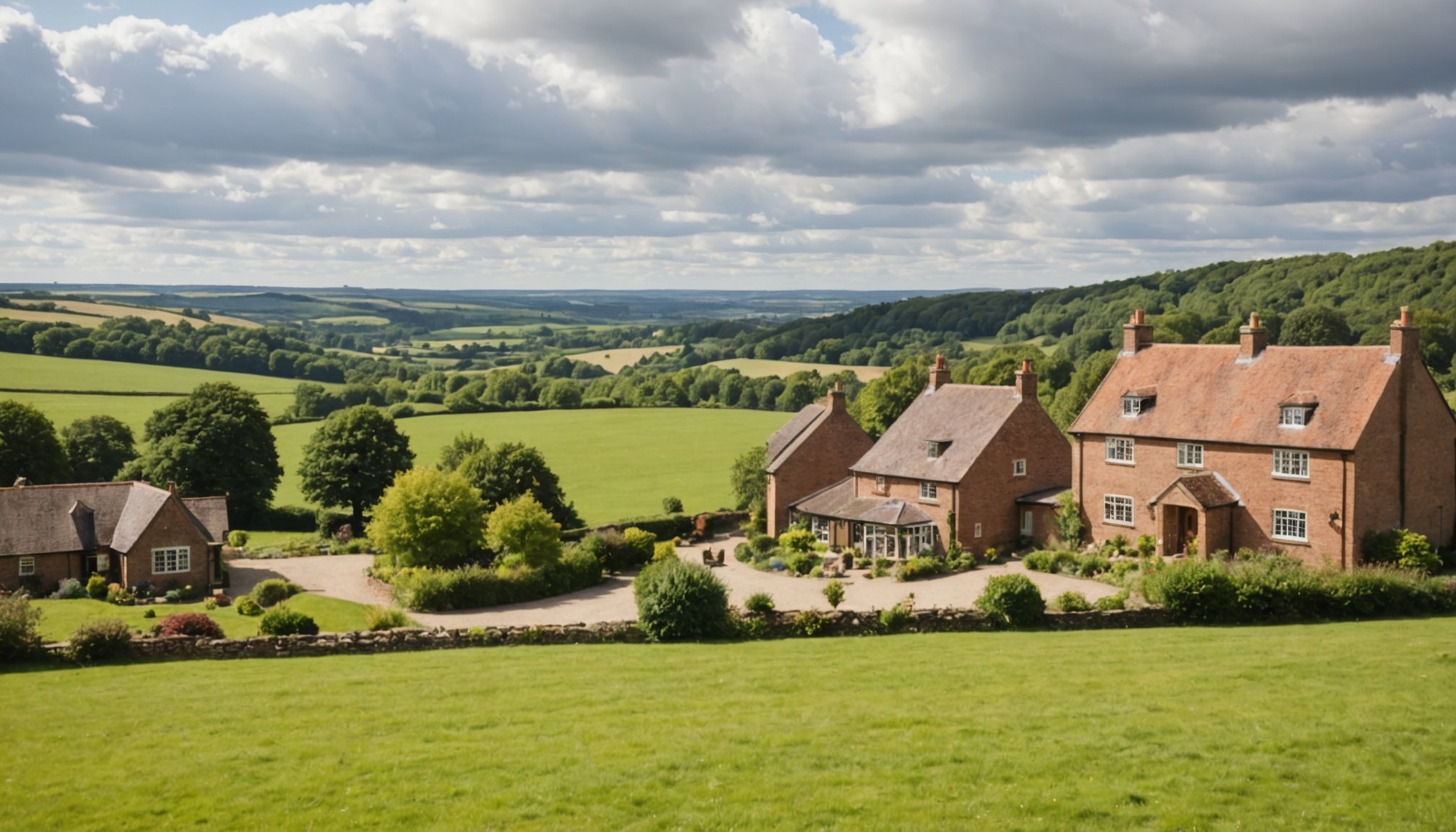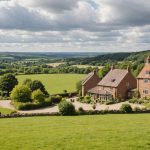Understanding Market Demand for Rural Senior Living Facilities
The aging population in England is steadily increasing, leading to a growing need for diverse senior living options. This demographic shift significantly impacts the market demand, especially for senior living facilities located in rural areas. Unlike urban centres, rural regions offer unique investment opportunities to meet these senior living needs.
Recent trends reveal a preference among seniors for peaceful rural environments, contributing to a rise in demand for facilities catering to this lifestyle. Seniors often desire properties with expansive green areas and a community-centered approach. This growth in rural demand contrasts with the traditionally high demand for urban senior living, which tends to focus heavily on access to amenities and healthcare services in close proximity.
Also to see : Unlocking Profit: The Financial Benefits of Transforming Office Spaces into Residential Apartments in Post-Pandemic Manchester
Despite differences, both urban and rural senior living facilities share the common goal of providing safe, comfortable, and accessible housing solutions. However, rural facilities might need to adapt more unique qualities by incorporating community engagement and support services that mirror the rural lifestyle. Understanding these evolving trends is essential for leveraging potential investment opportunities in rural regions to cater to the specific preferences of seniors. With market demand continuing to grow, rural senior living investments present a promising avenue for future development.
Economic Factors Influencing Investment
The economic conditions in rural England have a profound impact on investment decisions, especially in sectors such as senior living facilities. Investment returns hinge on a thorough understanding of the prevailing economic landscape. Evaluating this aspect involves considering various factors such as employment rates, inflation, and the availability of financial resources. Economic stability plays a crucial role in maintaining market stability, which in turn supports favourable conditions for investors.
In parallel : Top tips for american buyers in the paris real estate market
Market stability is essential for attracting and sustaining investments. When the economy is stable, there is a general confidence in the overall financial climate. This confidence encourages investments in sectors like senior housing, which require significant capital and long-term planning. Investors are more likely to commit to projects if there is an assurance of a stable return on investment.
Projected financial returns from investing in rural senior living facilities can be influenced by various economic conditions. Factors like local demand, community demographics, and government incentives all contribute to the potential profit margins. These investment returns can be quite lucrative, especially when the economic conditions are favorable and market trends indicate a growing need for senior accommodations. Understanding these nuanced economic factors can empower investors to make informed decisions, ultimately translating into sustainable and profitable ventures in rural England.
Regulatory Considerations
To thrive in the senior living market in England, understanding regulations and ensuring compliance is crucial. The regulatory requirements for senior living facilities encompass local planning laws and health regulations, which dictate how these facilities should operate. These frameworks are vital to ensure the safety and well-being of residents. Failure to adhere can lead to severe penalties, negatively affecting an investment.
Navigating local planning laws should be your first step, as these dictate where and how you can develop a facility. These laws differ significantly across regions, impacting your site’s location and design. Concurrently, meeting health regulations ensures that the facility provides a safe and habitable environment. This includes adhering to requirements for emergency procedures, sanitation, and the wellbeing of residents.
To remain compliant, it’s advisable to develop strategies that incorporate regular audits and reviews of procedures. Collaboration with legal experts familiar with the local landscape can also avert compliance issues. Additionally, securing the required licensing is essential, confirming that the facility meets all stipulated standards.
Investors should embrace compliance as an ongoing commitment rather than a one-time task. Proactively staying updated with changes in laws and regulations can safeguard your investment, ensuring you remain within legal boundaries and maintain high-quality standards.
Location Advantages for Senior Living Facilities
Choosing the ideal location for senior living facilities is a critical decision that combines several key factors. A comprehensive location analysis should focus on the accessibility to healthcare and essential community services, which are paramount for the well-being of senior residents.
Accessibility is fundamental. Proximity to hospitals and medical centers ensures that seniors receive timely medical care when needed, significantly enhancing their quality of life. Furthermore, close connections to pharmacies, clinics, and wellness centers can offer residents the regular medical check-ups and preventive care necessary for maintaining health. It is also essential for facilities to evaluate the availability of nearby public transportation, accommodating seniors who may no longer drive.
The community benefits offered by the location are equally important. Integration into an active community provides social opportunities and emotional support for seniors. Engaging with local events, recreation centers, and senior-focused clubs fosters a sense of belonging and companionship, which is vital for mental health and happiness.
When evaluating senior living facility locations, socio-economic factors cannot be ignored. A supportive economy can contribute to maintaining facility infrastructure, funding community projects, and increasing employment opportunities for facility staff, which in turn impacts the quality of service provided to residents. These considerations are crucial for the long-term success of rural senior living facilities.
Funding Options for Investments
Exploring different financing options is a crucial step in securing the necessary funds for rural senior living projects. A variety of avenues can be pursued to support such investments, each offering unique benefits.
Financing Options Overview
These include traditional bank loans, which can offer substantial capital but might entail stringent requirements and higher interest rates. Alternatively, credit unions provide more flexible terms and lower rates but typically involve smaller loan amounts. Additionally, exploring crowdfunding platforms can garner community support and financial backing from numerous small investors who believe in the project’s mission.
Government Grants and Subsidies
Delving into available government grants is essential for anyone investing in senior care. These grants can significantly offset initial costs, making the venture more viable economically. Certain subsidies also exist, aimed specifically at advancing rural healthcare infrastructure, which can further ease financial burdens.
Attracting Private Investors
To entice private investors, crafting a compelling proposal is vital. Highlighting potential returns and social impacts can significantly sway investment decisions. Moreover, forming strategic alliances through partnership opportunities amplifies the project’s credibility and attractiveness. Collaboration with established healthcare providers or tech companies not only boosts confidence among investors but also promotes innovation in care delivery.
By leveraging these funding strategies, stakeholders can effectively advance rural senior living projects, ensuring they are both financially sustainable and impactful.
Demographic Trends Impacting Investment Decisions
The current demographic shifts are vital for shaping investment strategies, particularly concerning the aging population. As rural areas see an increase in elderly residents, demands for specific services intensify. This demographic shift elevates the need for healthcare, transport, and social services tailored to seniors, thus creating new investment opportunities. Additionally, investors can focus on developing senior-friendly infrastructure and technologies that address these emerging market needs.
Changing family structures also play a crucial role in shaping senior living preferences. With more seniors living independently or with minimal family support, there’s a growing trend toward community-based housing and assisted living facilities. These alternatives encourage investment in residential spaces that offer shared amenities, safety features, and professional care services. Understanding these changes allows investors to tailor projects that meet the evolving needs of this demographic, optimizing returns while enhancing residents’ quality of life.
Looking ahead, future demographic developments will further influence market dynamics. An increasing focus on socially responsible investments that take into account the well-being of aging populations is becoming evident. By staying attuned to these trends, investors can engage in practices that are not only lucrative but also beneficial to market needs. Proactively addressing these demands secures a strategic foothold in an ever-evolving economic landscape.
Case Studies and Expert Insights
Exploring case studies from successful rural senior living facilities in England reveals how they have effectively addressed the unique challenges these settings present. One notable instance involves a facility that integrated community partnerships to enhance resident engagement. Situated in a remote location, the management recognised the importance of local collaboration and established a network with nearby schools and organisations. This partnership created opportunities for intergenerational activities, fostering a vibrant community atmosphere.
Interviews with experts in rural senior living provide valuable lessons drawn from previous investments. One crucial insight revolves around the importance of adaptable spaces. As needs change, facilities must be designed with flexibility to accommodate evolving care requirements. This approach not only ensures longevity but also enhances resident well-being by providing appropriate environments.
Furthermore, success stories often highlight the innovative solutions employed to overcome geographical and resource limitations. Implementing telehealth services has proven particularly beneficial in rural areas. Residents enjoy timely access to healthcare professionals without the need for lengthy travel, exemplifying a best practice that enhances both quality of care and convenience.
Overall, these expert opinions underscore the value of tailored approaches and community integration, demonstrating how strategic planning and creativity can lead to thriving rural senior living environments.
Practical Tips for Conducting Due Diligence
When diving into the world of investments, particularly in rural senior living facilities, due diligence becomes essential. A well-structured checklist can aid in evaluating potential investments. Start by investigating the facility’s financial health, including revenue streams, cash flow, and any existing debts.
Next, focus on the investment strategies. Understand the management team’s background and expertise. Are they experienced in operating senior living facilities? Their track record is a vital indicator of potential success or failure.
Risk management is another critical area. Consider the geographical location. Is the facility situated in an area with high demand for senior living services? Understanding demographic trends and local competitors is crucial to anticipating future growth or challenges.
Be aware of common pitfalls. Rushing the due diligence process is a notable error. Take your time to thoroughly assess all aspects before making decisions. Also, don’t rely solely on reports provided by the selling party. Independent verification is safer and more reliable.
Developing a solid framework for assessing risks and opportunities makes the due diligence process more efficient. This framework should integrate all relevant information, offering a clear view of potential benefits and challenges, ultimately helping in making informed investment decisions.











